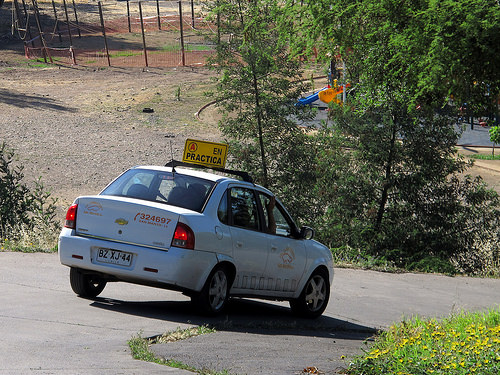For the past nine months it has been my privilege to take part, at two commercial driving schools, in Connecticut’s two-hour safe teen driving class, which is required for parents and teens when the teen has a learner’s permit. My hosts have been the Avon Driving School (Angela Brooks) and AAA West Hartford (Steve Rourke). I have been given the first half hour of the class to talk to 40-50 parents and teens about parenting through the dangers of driving.
I have posted on this blog many times about Connecticut’s two hour class, which was quite controversial when first rolled out in 2008, and still has its occasional objectors, but overall has come to be part of the landscape in Connecticut, and is now regarded (as documented by surveys) by an overwhelming majority of parents as useful and informative. Connecticut has seen a steep decline in teen driver fatalities since the class became mandatory, and there is no doubt that the class is a big part of our state’s progress. But my topic today is not the class, but the interaction of parents with the commercial driving schools where the class is provided
My major points to parents are (1) driver education is absolutely essential, because teens need to learn how to operate a motor vehicle and the rules of the road, and professional instructors are better trained and better positioned than parents to teach these skills; and (2) parents need to understand the limits of driver education, because no driving school can provide teen drivers with experience in anything close to the wide variety of difficult, dangerous, and complex judgment calls that they will need to make when they are on the road. Parents needs to understand that graduate of Drivers’ Ed is a beginner at a dangerous undertaking, not a PhD in safe driving.
My points to driving school owners and instructors are that parents who are well educated in the dangers of teen driving are their best customers, because they have a better appreciation of the importance of what they schools are doing to keep their teens safe, they have more realistic expectations, and they realize that they need to reinforce the driving school’s lessons, and not undermine them, at home.
All of this is to say that, through my participation in the Connecticut two hour class, I have realized that in addition to the benefits of conveying essential safety information to parents about teen driving, the class helps establish a partnership between parents and teens, by improving each one’s understanding of respective roles, and the need to work together.
So, let’s call safer teen driving a three way partnership: teen, parent, and driving instruction, each critical to safety, but each dependent on working with the other two.


